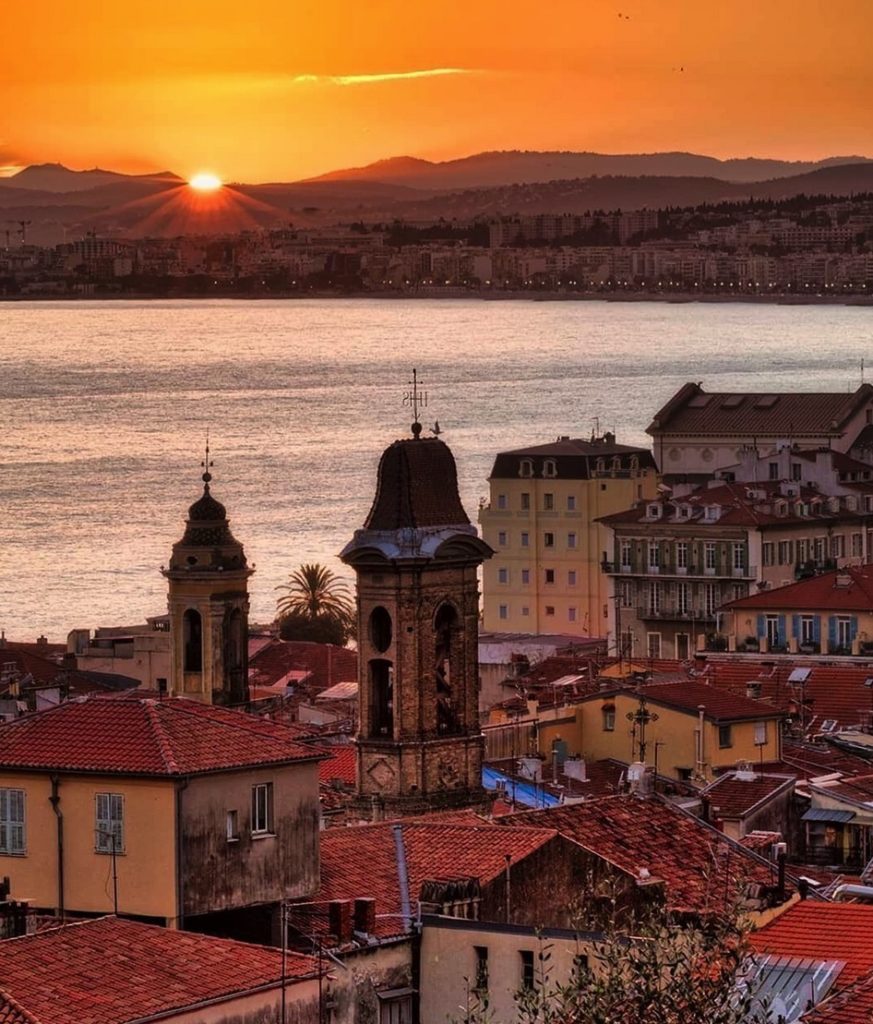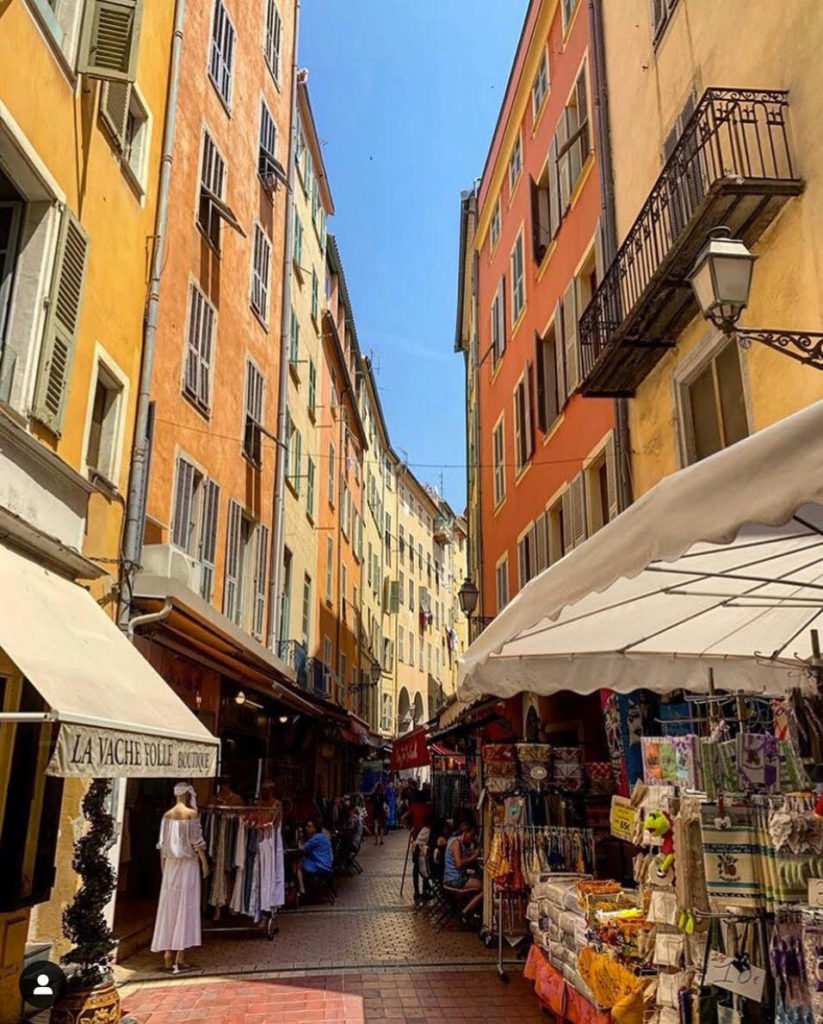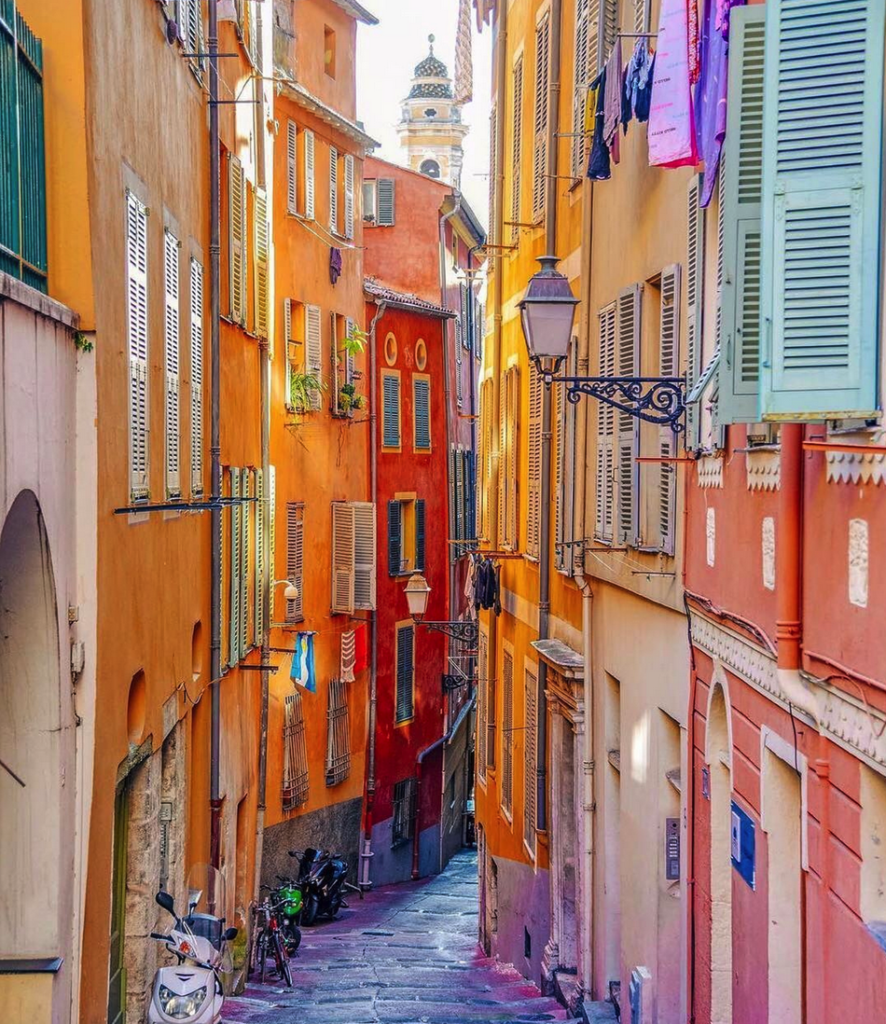
Jammed between the Mediterranean and the mountains, the oldest part of Vieux Nice doesn’t even have streets – just Carriera: passages barely wide enough for medieval carts. Historic Old Town of Nice (Vieux Nice) is a city built upon centuries of Mediterranean history, yet unlike other iconic cities with their easily recognized famous tourist icons, Nice remains a city whose identity is expressed is distinct and subtle ways. Much of its history is carved on its walls, an open book, but only to those who know how to read it. Old Town Nice consists of two parts: one which was the original Greek and Medieval city and a second of the early renaissance. A city which is not quite French, nor Italian, Nice since the fourteenth century belonged to a kingdom known as the Royal House of Savoy. The Kingdom of Italy was formed from part of Savoy in 1861, while in the prior year, the city of Nice was annexed to become part of France.

Nice was the birthplace of aristocratic tourism, originally comprised of medical tourism of a small group of ailing high society Englishmen and upper bourgeois who came to be cured of consumption (tuberculosis), its tourism gradually evolved to a large international clientele and healthy winter visitors including “super-tourists” such as royalty, philanthropists, politicians and those wealthy enough to support a life of leisure, high culture, vast privilege, a way of life that has all but disappeared in the modern world, but continues to be fascinating. Nice, especially in the nineteenth century was the capital of aristocratic winter tourism, and never developed any other major industry. With WWI and the Russian Revolution, Nice lost its aristocratic winter clientele, but it would be revived in the 1920s with the arrival of the Americans who brought a new level of entertainment to the Côte d’Azur, and the enjoyment of summer activities. It was no longer the blue blooded aristocrats, but the wealthy, many of them capitalists coming from new money and those whose existence were funded by trust funds, along with the leading literary figures, artists and musicians who made the Riviera famous and glamorous.

You will spend three hours walking in the Old Town, bounded by the Mediterranean Sea on one side and the Paillon river, which today has been buried under a garden park known as the “coulée vert”. Above the Old Town is the Castle Hill, from which the most scenic photographs of the city are taken. When you enter the Old Town you will leave behind the wide avenues made for vehicle traffic, the modern hotels and go back in time to when Nice was a cocoon surrounded by protective walls with its local bazars and markets. Where every passageway has reminders of its past with Latin words placed above doorways, discrete but never erased. Where buildings weren’t destroyed, just refurbished under the strictest zoning restrictions to retain and protect the city’s original and humble character.

